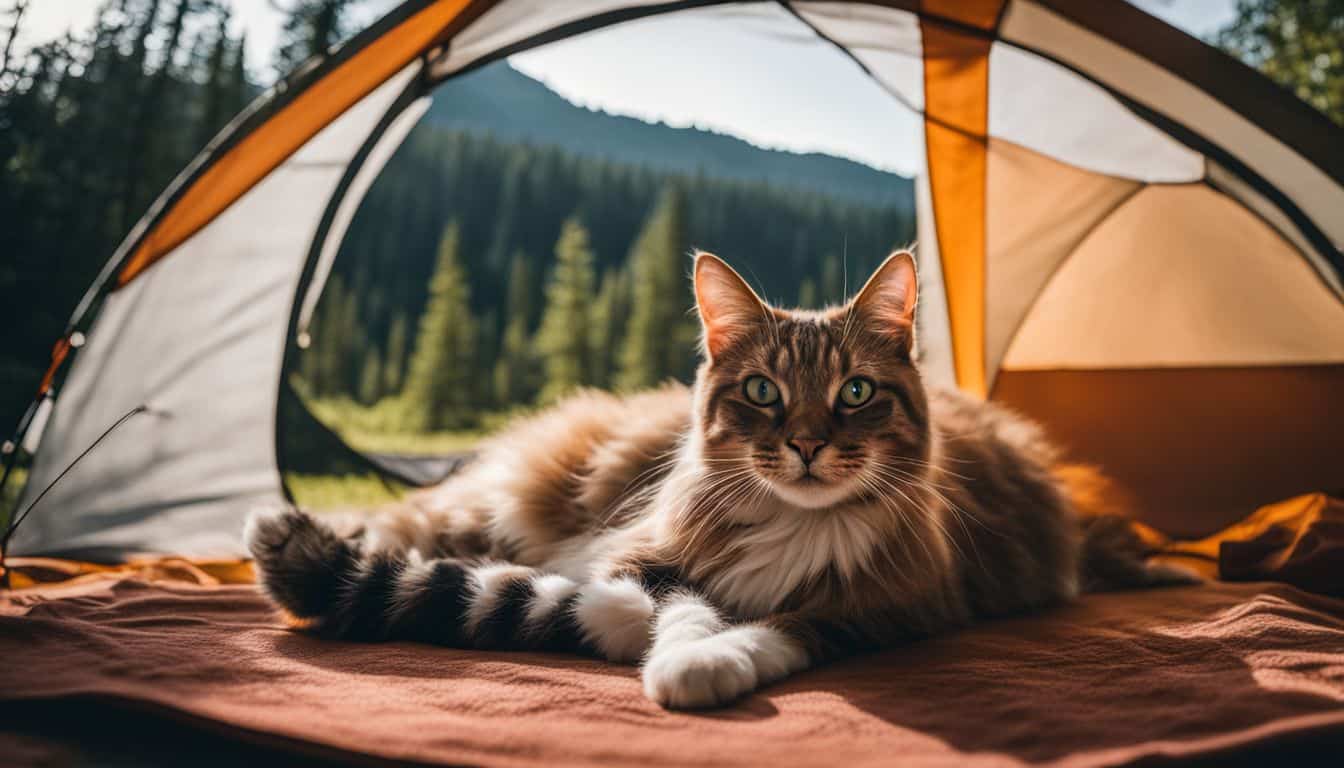Camping with your feline friend can be a rewarding experience, allowing you both to enjoy the great outdoors together. However, when it comes to campfires, safety should be your top priority. This comprehensive guide will help you navigate the potential risks and ensure a safe and enjoyable camping experience for you and your cat.
The Importance of Supervision
When camping with cats, constant supervision is crucial, especially around campfires. Cats are naturally curious creatures, and the flickering flames of a campfire can be particularly enticing. Always keep a watchful eye on your cat when a campfire is lit, and never leave them unattended near an open flame. This vigilance is essential in preventing accidents and ensuring your cat’s safety throughout your camping trip.
Creating a Safe Environment
Establishing a “pet-free zone” of at least 3 feet around the campfire is a smart precaution. This buffer zone helps protect your cat from potential burns, flying embers, and excessive heat. Train your cat to respect this boundary by consistently redirecting them if they approach too closely. You might consider using a portable fence or enclosure to create a physical barrier between your cat and the fire area.
Secure Your Cat
While camping, it’s essential to keep your cat secure, especially when a campfire is present. Use a harness and leash to maintain control over your cat’s movements. For added safety, consider investing in a cat-specific tent or enclosure. These provide a secure space for your cat to observe the camping activities without the risk of getting too close to the fire.
If your cat experiences anxiety in new environments, which is common during camping trips, learn about dealing with cat anxiety while camping. This can help make the experience more enjoyable for both you and your feline companion.

Fire Management and Safety Precautions
Proper fire management is crucial when camping with cats. Always fully extinguish the campfire before going to sleep or leaving the site. Ensure the fire is cool to the touch before allowing your cat near the area. This precaution prevents accidental burns from lingering hot spots.
Be aware of flying embers and sparks, which can not only harm your cat but also potentially start a fire if they land on flammable materials. Keep your cat’s bedding, toys, and other belongings away from the fire area to minimize risks.
Emergency Preparedness
Being prepared for emergencies is a vital aspect of camping with cats. Always have a pet first-aid kit readily available and familiarize yourself with its contents. Know the location of the nearest veterinary clinic in case of any accidents or health issues. It’s also wise to practice your evacuation plan, including how to quickly and safely secure your cat in case of an emergency.
Identification and Microchipping
Ensure your cat wears a collar with up-to-date ID tags throughout your camping trip. Consider microchipping as an additional safety measure. In the unlikely event that your cat gets lost, these identification methods significantly increase the chances of a happy reunion.
Smoke Awareness and Respiratory Health
Be mindful of smoke direction and try to keep your cat upwind of the campfire. Smoke can irritate your cat’s respiratory system, potentially causing discomfort or health issues. If you notice your cat showing signs of distress due to smoke, move them to a clearer area or consider extinguishing the fire if necessary.
Burn Prevention and Paw Care
Never allow your cat to walk on recently extinguished fire pits, as the ground can remain hot long after the visible flames are gone. Regularly check your cat’s paw pads for any signs of burns or injuries, especially after spending time near the campfire area.
General Campsite Safety
While focusing on campfire safety, don’t forget about general campsite safety measures. Store food securely to avoid attracting wildlife, which could pose a threat to your cat. Keep your cat’s carrier easily accessible in case of emergency evacuation. For more information on suitable carriers, check out our guide on cat carriers for camping.

Conclusion
Camping with cats can be a wonderful experience, but it requires extra care and attention, especially when it comes to campfire safety. By following these guidelines and always prioritizing your cat’s well-being, you can help ensure a safe and enjoyable outdoor adventure for both you and your feline companion.
Remember, if at any point your cat shows signs of stress or if conditions become unsafe, it’s best to err on the side of caution and forgo the campfire. The safety and comfort of your cat should always come first in your camping experiences.

Leave a Reply